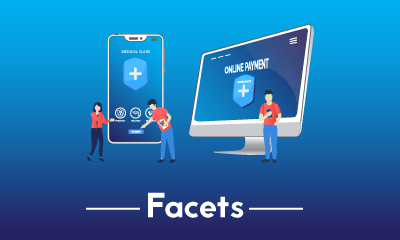What is TOGAF? - A Complete Tutorial
Organizations around the world use TOGAF to plan, design, implement and overall manage their Enterprise Architecture. In this article, we will share detailed information about TOGAF and its fundamental concepts.
30-Seconds Summary:
-
TOGAF stands for The Open Group Architecture Framework. It is an enterprise architecture methodology. The Open Group developed it in 1995.
-
ADM (Architecture Development Method) is the core of TOGAF.
-
There are two TOGAF certifications - Level 1 and Level 2 Certifications.
-
More than 60% of Fortune 500 companies have adopted TOGAF for their businesses.
-
Two main benefits of TOGAF include high ADM customization and scalability.
-
This TOGAF article will cover everything you need to know about Enterprise Architecture, goals and pillars of TOGAF, certifications, tools, benefits, details of salaries, and much more.
What is TOGAF Basic Concepts - Table of Content
- What is enterprise architecture?
- Evolution of TOGAF
- What are the goals of TOGAF?
- What are the pillars of TOGAF?
- What is ADM in TOGAF?
- What are the certifications for TOGAF?
- What is the role of certified TOGAF professionals?
- What are the different TOGAF tools?
- What are the benefits of using TOGAF?
- TOGAF vs. ITIL
In today’s enterprise architecture landscape, TOGAF is the most used framework. The Open Group developed TOGAF, which stands for The Open Group Architecture Framework. TOGAF helps organizations in designing IT infrastructures that can be tailored to meet their specific requirements. To make this possible, trained experts communicate with different department heads to help them design and implement business strategies. With TOGAF, these strategies can be executed quickly and easily.
In this article, we will dive deep into TOGAF to understand its importance. But firstly, let’s understand what enterprise architecture means. Keep on reading to learn more.
What is enterprise architecture?
Enterprise architecture is a practice that aims to provide solutions to business needs. It is a structure that analyzes, plans, designs, and implements technology. The ultimate goal of enterprise architecture is to execute business strategies in the most efficient, fast, and secure manner.
Evolution of TOGAF
The Open Group first developed TOGAF in 1995. It was inspired by the U.S. Department of Defense’s EAF, called the TAFIM. Twenty years later, TOGAF is one of the most successful frameworks in enterprise architecture. The Architecture Development Model (ADM) is the core of TOGAF. Organizations use ADM to build processes around the architecture’s lifecycle. Currently, over 70 organizations offer 71 accredited courses and 8 certified tools.
What are the goals of TOGAF?
TOGAF aims to help the organization address their needs through four main goals:
- Getting a provable return on investment (ROI).
- Utilizing more cost and money-effective resources.
- Avoiding being “locked in.”
- Making sure that the stakeholders and team members are speaking the same language.
| Related Article: TOGAF Vs Zachman |
What are the pillars of TOGAF?
TOGAF works on three main pillars that make it possible to achieve the goals listed above. These pillars demonstrate an organized process that helps utilize technology in a way that meets the business objectives.
The three key pillars of TOGAF are:
- Enterprise Continuum: It is a classification system that tracks customized enterprise solutions from generic to industry standards.
- Architecture Development Model (ADM): Its goal is to develop enterprise architecture with the help of performance engineering.
- Domains of enterprise architecture: They are divided into four main parts:
-
- Business architecture: It outlines business strategies and the organization of processes.
- Data architecture: It records how the data assets and management resources are structured.
- Applications architecture: It defines a blueprint for the deployment of individual systems.
- Technical architecture: It includes the hardware, software, and network infrastructure.
What is ADM in TOGAF?
ADM stands for Architecture Development Method. It is the core of TOGAF that is responsible for developing Enterprise Architecture that aligns with the business requirements.
The ADM consists of 4 steps:
- Adjusting TOGAF to meet the system and business requirements.
- Defining the scope of work and preparing for rollout.
- Managing the development and implementation of the architecture.
- Handling the changes after implementation.
| Checkout Our Frequently Asked TOGAF Interview Questions |
What are the certifications for TOGAF?
The Open Group provides two main certifications:
- Level 1 TOGAF Certification: This certification is the foundation level that teaches the basics of enterprise architecture and TOGAF.
- Level 2 TOGAF Certification: It teaches business analysis, tools, and other concepts.
TOGAF’s certifications are globally recognized and demonstrate an individual’s ability to use the framework to the best of their ability. It validates how they apply it to meet the application and business goals and needs. According to PayScale, here’s a table showing the salary differences between certified and non-certified professionals.
| Job role | Average salary | Salary with TOGAF certification |
| IT director | $113,450 | $136,433 |
| Software architect | $119,819 | $136,433 |
| IT architect | $115,133 | $119,018 |
| Solutions architect | $115,345 | $125,326 |
| IT enterprises architect | $127,159 | $137,247 |
In summary, here are few benefits of a TOGAF certification:
-
Improved efficiency
-
Easy communication between organizations.
-
Creating processes for future development.
What is the role of certified TOGAF professionals?
The main responsibility of a certified TOGAF professional is simplifying the complications of technical processes in architecture development. Other responsibilities of TOGAF experts include:
- Mastering the enterprise architecture principles.
-
Helping businesses develop long-term strategies to achieve their goals.
-
Certification helps professionals handle the complete infrastructure portfolio.
-
Creating a roadmap to guide a business process in the right direction so they meet the standards of the framework.
-
Maintaining technologies and their life cycles when there are changes such as new updates or versions.
What are the different TOGAF tools?
There are 8 certified TOGAF tools. They are:
- Sparx Systems
- Software AG
- Planview
- Orbus Software
- BOC Group
- BiZZdesign
- Evolution
- Alphabet AG
What are the benefits of using TOGAF?
Here are some advantages of TOGAF:
- The ADM (architecture development model) can be customized to meet business needs instead of having a rigid structure.
-
It is highly scalable to reduce errors.
-
Development processes can be replicated with minimal errors and defects.
-
According to research, certified TOGAF professionals may earn an attractive average salary of $10,000 to $20,000 per year.
TOGAF vs. ITIL
Differences between TOGAF and ITIL are:
| Criteria | TOGAF | ITIL |
| Full form | The Open Group Architecture Framework | IT Infrastructure Library |
| When was it developed? | Developed in 1995 | Developed in the 1980s |
| Main focus | Enterprise architecture | Service management. |
| Caters to | Business architecture | |
| Delivers | Developing and monitoring business solutions. |
Conclusion
The Open Group says that more than 60% of Fortune 500 companies have adopted TOGAF. Although it may seem that the framework is complicated, many organizations are making use of its benefits. TOGAF has been proven useful to companies who continuously bring in new technology, as they do not have to start from scratch.
 On-Job Support Service
On-Job Support Service
Online Work Support for your on-job roles.

Our work-support plans provide precise options as per your project tasks. Whether you are a newbie or an experienced professional seeking assistance in completing project tasks, we are here with the following plans to meet your custom needs:
- Pay Per Hour
- Pay Per Week
- Monthly
| Name | Dates | |
|---|---|---|
| TOGAF Training | Apr 05 to Apr 20 | View Details |
| TOGAF Training | Apr 08 to Apr 23 | View Details |
| TOGAF Training | Apr 12 to Apr 27 | View Details |
| TOGAF Training | Apr 15 to Apr 30 | View Details |

I am Ruchitha, working as a content writer for MindMajix technologies. My writings focus on the latest technical software, tutorials, and innovations. I am also into research about AI and Neuromarketing. I am a media post-graduate from BCU – Birmingham, UK. Before, my writings focused on business articles on digital marketing and social media. You can connect with me on LinkedIn.













